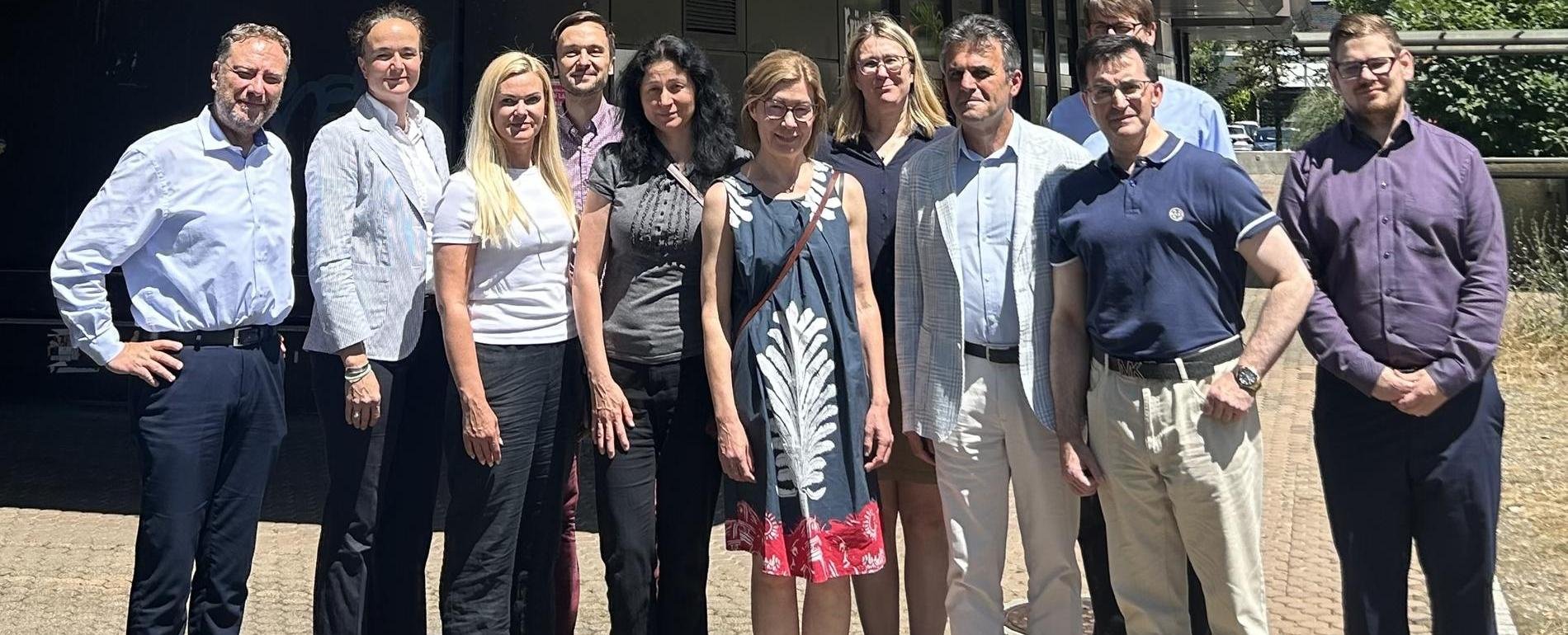2/25
The CIM Working Group resumes with fresh momentum in 2025

The CIM Working Group resumes with fresh momentum in 2025
The first 2025 meeting of CIT's CIM Working Group (CIM WG) was chaired by Carola Folch von Sydow (DB AG) and held at CIT headquarters in Bern. The most important items on the agenda at the 38th meeting were the enhancement of the CIT Freight products, the revision of COTIF within the OTIF framework, and the legal structure of intermodal transport.
Enhancement of CIT Freight products
Article 23 ff. of the CIM Uniform Rules regulates the liability of the carrier between the time of taking over of the goods and the time of delivery. The maximum limit of the carrier's causal liability towards the customer in the event of total or partial loss of the goods is set at 17 SDR (approximately 23 EUR) per missing kilogram of gross mass (Article 30, §2 CIM), or a percentage of the loss in value of the goods ascertained at the place of destination (Article 32, §1 CIM). According to Article 5 CIM, the carrier can extend its liability and obligations in accordance with the CIM UR. According to the contract for the international carriage of goods by rail, the CIM UR begin when the carrier takes over the goods from the consignor and ends when the carrier delivers the goods to the consignee.
A key strategic imperative for CIT GS is to provide innovative products for international freight traffic that directly address the specific requirements of its members. The CIT GS has therefore asked the members of the CIM WG to start working on ways to improve the relationship between contractual and/or successive carriers and substitute carriers. Following approval by the CIM Committee of the CIT in March 2025, a new boilerplate contract on substitute carriage in international rail freight is implemented on an opting-in basis and is applicable by CIT from 1 July 2025.
The CIM WG is also developing a boilerplate clause in accordance with the CIT Committee's resolutions from March 2025. In practice, the contractual carrier often has little information about what is stipulated in the subcontracting contracts used by the various substitute carriers in the cascade. According to the CIM WG's proposals, the boilerplate clause should also include additional services and special carriages. It can be legally applied to spot traffics between new business partners or to infrequent services.
Revision of the COTIF CIM and CUV Uniform Rules
Following the General Assembly in September 2024, the OTIF Secretariat launched a survey in October to assess the need to revise the COTIF Uniform Rules CIM, CUV and CUI. On 17 January 2025, the GS CIT sent the OTIF Secretariat a comprehensive response regarding the individual contractual appendices to COTIF 1999. All responses to the survey were included in OTIF document LAW-25016-JUR 7/4, dated 25 February 2025, which summarises the approximately 40 responses received from the various stakeholders who participated in the consultation, including those relating to the CIM and CUV Uniform Rules.
The CIT GS, led by the CIT President, also played an active role in the 7th meeting of the OTIF Ad hoc Committee on Legal Affairs and International Cooperation in April 2025. Based on the discussions at this meeting, OTIF prioritised the following topics:
- Accessions to and association with the COTIF Convention of general interest;
- Digital tickets;
- Passenger rights and improvements to passenger comfort relating to the CUV UR.
- Digitalisation within the framework of the CIM UR;
- Liability for damage caused by a wagon (Article 7 CUV).
All other topics were classed as medium priority in the 2025-2027 work programme. The OTIF Secretariat has sent out two additional documents on the revision of the CUV UR: LAW-25020-JUR 7/6 "Wagon law" and LAW-25022-JUR 7/6 "Liability under Article 7 of the CUV UR". The results of this consultation will be discussed in more detail at the 8th meeting of the Ad Hoc Committee on 3-4 December 2025.
Intermodal transport
Multimodal transport, which combines several modes of transport without reloading, is now a central pillar of Europe's sustainable mobility policy. Rail traffic plays a pivotal role in this integrated system, thanks to its ability to offer a solution not only to greenhouse gas emissions but also to road congestion. Against this background, freight terminals are becoming strategic hubs that facilitate the seamless interconnection of rail, road, and sometimes inland waterways. European regulations seek to promote and regulate these practices, supporting the energy transition and enhancing logistics efficiency.
In terms of recent political and institutional developments, the European Union is actively supporting the development of intermodal transport through instruments such as Regulation (EU) No. 913/2010 on rail freight corridors. The revision of this regulation has been underway since the publication of the legislative proposals in the Greening Transport Package in July 2023. The project to revise the Regulation (EU) No. 913/2010 aims to rationalise the management of capacity and rail traffic within the Single European Railway Area. Regulation 913/2010 is due to be repealed in December 2029, after which it will be replaced by a consolidated legal framework covering the entire European rail network.
In practice, intermodal terminals are often viewed as a weak link in the system due to their underutilisation or unsatisfactory connections to the main rail transport routes. Despite initiatives designed to harmonise technical standards, improve cross-border coordination and simplify customs procedures, differences between Member States remain. Additionally, the digitalisation of logistical information exchange has not yet been completed and this is hampering the smooth operation of multimodal transport chains.
Informed by discussions within the CIM WG, the CIT GS will collaborate with other organisations such as the CER, UIC and UIRR to consider all issues pertinent to clarifying the legal requirements for the use of terminals. This will enable the introduction of concrete, practical solutions at CIT level.
Next meeting
The next meeting of the CIM WG will take place on 26/27 November 2025 at CIT headquarters in Bern.
